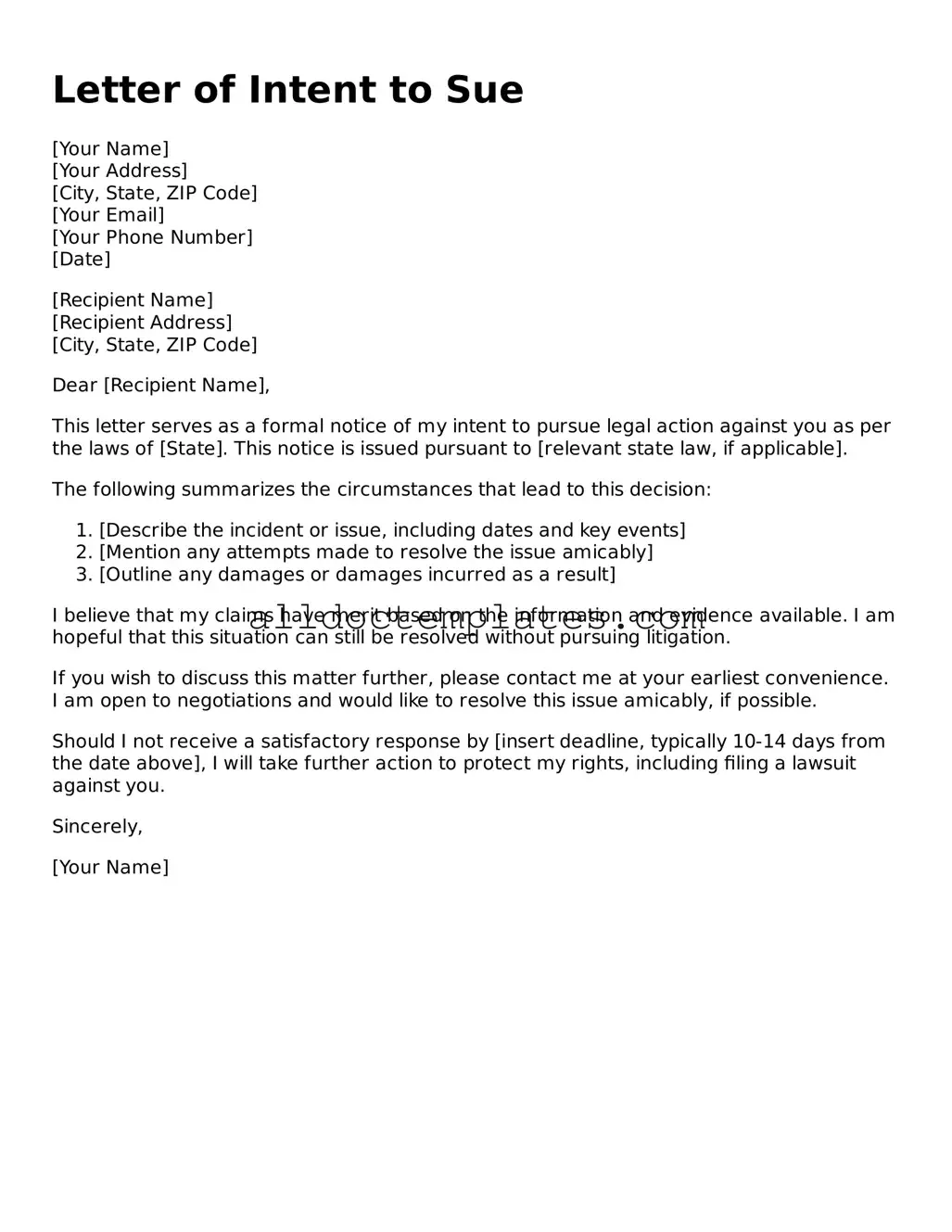Letter of Intent to Sue
[Your Name]
[Your Address]
[City, State, ZIP Code]
[Your Email]
[Your Phone Number]
[Date]
[Recipient Name]
[Recipient Address]
[City, State, ZIP Code]
Dear [Recipient Name],
This letter serves as a formal notice of my intent to pursue legal action against you as per the laws of [State]. This notice is issued pursuant to [relevant state law, if applicable].
The following summarizes the circumstances that lead to this decision:
- [Describe the incident or issue, including dates and key events]
- [Mention any attempts made to resolve the issue amicably]
- [Outline any damages or damages incurred as a result]
I believe that my claims have merit based on the information and evidence available. I am hopeful that this situation can still be resolved without pursuing litigation.
If you wish to discuss this matter further, please contact me at your earliest convenience. I am open to negotiations and would like to resolve this issue amicably, if possible.
Should I not receive a satisfactory response by [insert deadline, typically 10-14 days from the date above], I will take further action to protect my rights, including filing a lawsuit against you.
Sincerely,
[Your Name]
